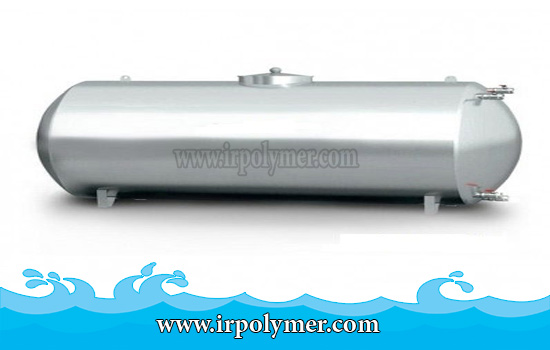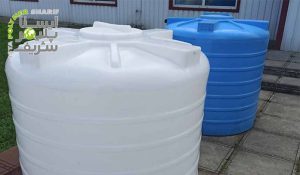Today, due to the scarcity of fresh water, various solutions are proposed for storing and efficiently using water. One of these solutions, which is relatively older compared to others, is storing water in a tank. Different types of tanks made from various materials, including metal, composite, polymer, and others, are used for this purpose. Given the cost involved and the difficulty of replacing tanks, it’s advisable to familiarize yourself with the types of tanks and their features before purchasing to ensure you choose the best water tank.
Durability
One of the most important features in selecting the best water tank is its durability. The best tank is one that has a long lifespan, as this reduces the need for frequent replacements. However, even the best tank’s lifespan is significantly influenced by the conditions of maintenance and usage.
Iron tanks, which are less commonly used today, do not have a long lifespan because they begin to rust when exposed to water. However, their lifespan can be extended with protective coatings. Galvanized welded tanks can corrode at the welding joints where the protective layer is lost, though corrosion can be delayed with resistant coatings. Therefore, these two types of tanks are not considered the best water storage tanks in terms of durability.
The newer generation of galvanized tanks, known as modular galvanized tanks, have high resistance to corrosion due to their modular construction and the absence of welding. They are often coated with epoxy or polyurethane, which enhances their durability. Concrete water tanks, which have been used for many years, depend on the quality of the concrete and the professionalism of the pouring process for their lifespan. Better quality concrete and more professional construction lead to a longer lifespan, but concrete tanks are vulnerable to disasters like earthquakes and may face serious issues.
Polyethylene tanks are sensitive to temperature. High and low temperatures have destructive effects on them, reducing their lifespan. Exposure to sunlight also accelerates damage to these tanks.
Composite tanks, whether manually layered or modular, may develop very fine cracks over time, which can grow and lead to fractures. Composite tanks also have low resistance to earthquakes.
Construction Process
The construction process of a tank is very important. The best tank is one that, in addition to having a long lifespan, has a simple construction process and can be ready in a short time. Among the tanks discussed, concrete tanks have the longest construction time.
If the tank is large, its construction can take several months, and after construction, additional time is needed for the concrete to cure before the tank is ready for use. Therefore, concrete tanks cannot be considered the best water tanks. Among the mentioned tanks, modular tanks are the best in terms of construction time, as the necessary components are easily transported to the installation site, and depending on the tank’s size, it can be assembled and made ready for use within a few days.
Welded tanks are challenging to construct on-site due to the welding process, as they are often installed in closed spaces like boiler rooms, making welding difficult. Even if these tanks are manufactured in a workshop and transported to the site, the process of handling and transportation is not straightforward. Thus, these tanks cannot be considered the best water tanks in terms of construction.
Quality of Stored Water
The quality of stored water is a crucial factor in determining the best water tank, especially when the tank is used for drinking water. To maintain the quality of the stored water, the tank material must not react with the water in a way that affects its quality.
While it’s impossible to have a completely non-reactive surface, the reaction should be within defined standards. Stagnant water can lead to algae growth, and sunlight exposure exacerbates this issue. Among the tanks mentioned, all have some impact on water quality, but the potential for algae growth is higher in polyethylene tanks exposed to sunlight.
Concrete tanks may also facilitate the growth of certain fungi due to the porous nature of concrete. Composite and galvanized tanks offer better conditions in this regard. Modular galvanized tanks (with coatings suitable for contact with drinking water) are the best in terms of maintaining water quality.
Maintenance
Maintenance is another critical factor; the easier and more straightforward it is, the more it contributes to making a tank the best for water storage. Cleaning polyethylene tanks, modular galvanized tanks with epoxy (polyurethane) coatings, and composite tanks is relatively easier compared to other tanks, as contaminants adhere less to these surfaces, making them ideal for water storage.
Modular tanks are the best in this regard because damaged modules can be easily removed and repaired or replaced. Among composite modular tanks and galvanized tanks, composite modules must be entirely replaced if damaged, while galvanized modules can be repaired if problems occur.
This article aims to explore the various parameters affecting the selection of the best water tank and to simplify the choice of the best water storage tank for you.






